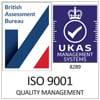Recruiting can be complicated—and with the wrong tools, it can also be time-consuming and frustrating. Luckily, with today's technology, there are now a number of ways you can improve efficiency—such as using a database for effective resume management.
By investing in a resume management system for your business, you can organize your resumes and handle candidate data more effectively. The best resume management systems can do more than just store resumes—they also serve as comprehensive tools that aid recruiters throughout the entire recruiting cycle, from candidate sourcing to making placements. And, by integrating additional tools into your resume management system, your recruiters can make the most of this tech stack to help them save time, find more candidates and make more placements.
In this article, we will explain what resume management systems are and explore different kinds of solutions that you can integrate to get more out of your resume database and maximize the value of your candidate data.
ATS vs CRM
In order to properly manage talent on a large scale, recruiters tend to leverage different types of resume management systems. The two main ones are applicant tracking systems (ATS) and candidate relationship management (CRM) systems.
What Is An ATS?
An ATS, often utilized by in-house talent acquisition teams, is a software application primarily used to collect, organize, and track candidate resumes, job applications, and communications throughout the hiring process. ATS systems can also help streamline the hiring process by automating tasks such as candidate screening, interview scheduling, and more.
What Is A CRM?
A recruiting CRM system, more commonly used by staffing agencies, is designed to help develop and nurture candidate (and client) relationships, giving the opportunity to engage and re-engage with the same people over time. CRM systems are also often used in recruiting to identify potential candidates who have not yet applied for a role.
Although an ATS and CRM can be used individually, in some cases, recruiters use them together to maximize their efficiency, as using both systems gives recruiters the ability to successfully manage opportunities within the pipeline and facilitate smooth transitions between the different stages in the recruiting process. As stated in the LinkedIn ATS Buyers Guide, 78.3% of recruiting professionals report that having an ATS improves the quality of candidates they hire.
How To Choose The Right ATS Or CRM
There are a diverse range of ATS and CRM options available on the market. While many of them have features in common, each ATS or CRM system is unique. Thus, you should carefully evaluate what features are included in a particular system, and determine:
- if those features can enhance your existing workflows
- if the system allows you to integrate additional tools to enhance the ATS or CRM system's functionality, for example, parsing, data loading, searching and engagement
But how can you determine the most suitable solutions for your company? The answer depends on your unique needs. What goals are you trying to achieve? You can determine this by assessing your current recruiting processes, and identifying specific pain points. For example, what obstacles do your recruiters encounter when sourcing, loading or engaging with candidates? This will help to outline the essential features you will need in a resume management system.
Ultimately, the effectiveness of any tech stack depends on its adoption. Therefore, you need to ensure that the technology not only helps your recruiters tackle their challenges but also enables them to do so with increased ease and efficiency.
How Can Additional Solutions Enhance A Resume Management System?
Integrating additional solutions into an ATS or CRM can help to improve your recruiters’ productivity by automating admin and helping with recruiting tasks such as candidate searches, candidate engagement and matching candidates to jobs. Here are a few ways these additional technology solutions could transform your approach to various stages of the recruiting process.
Finding Suitable Candidates
Sourcing candidates is a big part of recruiting. But there’s a difference between active sourcing and passive sourcing.
Active sourcing involves recruiters searching for and reaching out to individuals who may not be actively seeking new job opportunities, but possess the skills and experience for a specific role. This can be done through different channels including social media, professional networks, and referrals. Passive sourcing, on the flip side, typically involves promoting job vacancies on job boards, social media and careers sites and then waiting for interested candidates to submit their resumes.
Implementing the right search solution integrated with your resume management system can actively aid your recruiters in these processes. Some solutions can simultaneously search your database, job boards, and social sites, allowing your recruiters to find the most relevant candidates, filter results, and build shortlists—with all the information captured in the ATS or CRM. They can also allow for a more powerful and targeted search of your internal database compared to its built-in search functionality. This can help highlight candidates in your database that your recruiters might have overlooked (or didn't know they already had) who are a great match for a specific role.
Advanced solutions can offer even more functionality. For example, Daxtra Search Nexus intelligently ranks candidates by relevance, based on the context of the search term in their resume. It also provides a score for each of the search criteria, so recruiters can better understand the candidate ranking. Using natural language processing makes this similar to if a human was reviewing each resume.
Overall, better search tools (especially those powered by AI) mean recruiters can spend less time searching for candidates across different platforms and more time pinpointing the best candidate for the job. These tools can also boost productivity by reducing the amount of time it takes to deliver the best candidates to clients.
Ensuring Quality Data
Streamlining the way your recruiters search for candidates is only half the battle. It’s equally important to ensure the accuracy and quality of candidate information to maintain an effective resume database—which will allow your recruiters to source from it in future.
Manual data entry can be time-consuming at best and impossible to scale for high volumes of data at worst. While an ATS or CRM can help store candidate data, an integrated data loading solution can automate routine database administrative tasks like resume processing and deduplication.
For example, if resumes come through via mailbox, website, job boards or social media, this software can monitor these locations and use automation to load complete, accurate candidate data into an ATS or CRM. Automating this process can help you save time by removing the amount of manual work your recruiters need to do to process resumes, create candidate records and assign skill codes—and make sure you can track the source.
A solution like Daxtra Capture can help keep your database fresh and up to date. When a candidate sends in their resume, it creates a new record or updates the existing candidate record to add any new information to your database so recruiters always have the right candidate information at hand. This way, it is consistently populating the database with rich, accurate data which leads to more accurate searching, quicker shortlisting, and more placements.
Engaging With Candidates
Building relationships with candidates can be difficult, especially in today's mostly virtual hiring settings. Sending impersonal, unexpected emails can be quite off-putting and might discourage potential candidates.
For recruiters, the key lies in effective candidate engagement—reaching out to candidates directly with personalized, one-on-one messaging to help foster genuine human connections. However, this process can be highly time-consuming, underscoring the importance of investing in candidate engagement technology that supports nurturing talent to achieve greater success. Your recruiters want to be able to leverage their CRM system to automate personalized email responses and much more, such as scheduling follow-up communication and providing application status updates.
To further enhance the candidate experience, you can integrate a candidate engagement solution with your CRM. For example, PivotCX by Daxtra is a product that enables your recruiters to engage in personalized conversations with candidates at scale and speed, allowing them to improve their response times when communicating with candidates.
Maintaining an actively engaged pipeline or database of candidates is crucial in effectively attracting top talent. By providing a great candidate experience, your recruiters can significantly reduce time-to-fill positions and elevate the overall quality of hires.
How The Right Tech Stack Will Benefit Your Recruiters
Building your tech stack by choosing a resume management system and additional integrated solutions is an investment. However, over time, this investment will yield substantial benefits.
Employ reported in their Insights Report that companies with purpose-built, interconnected recruitment technologies in their tech stack experienced 27% faster hiring cycles and reduced their candidate acquisition costs by 30% compared to orgs without best-of-breed TA tech stacks.
Recruiters with a strong, integrated tech stack are better positioned to navigate the challenges of modern recruiting, ultimately contributing to more successful outcomes for their organizations. Want to learn more about how to build your recruiting tech stack successfully? Check out our guide to building a tech stack.



